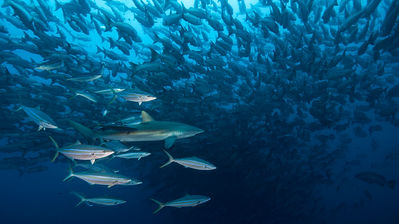top of page

Silky Shark
Carcharhinus falciformis
Large numbers of silky sharks are caught by commercial and artisanal multispecies shark fisheries operating off Mexico, Guatemala, El Salvador, Costa Rica, the United States, Ecuador, Spain, Portugal, Sri Lanka, the Maldives, and Yemen. Even greater numbers are caught incidentally by tuna longline and purse seine fisheries throughout its range, particularly those using fish aggregating devices. It is the most common shark caught as bycatch in the eastern Pacific and Gulf of Mexico tuna fisheries.The fins are valued as an ingredient in shark fin soup, with captured sharks often finned at sea and the rest of the body discarded. Fins from an estimated half to one and a half million silky sharks are traded globally per year.
The silky shark is classified by the International Union for Conservation of Nature as a vulnerable species. The silky shark is listed on Annex I, Highly Migratory Species, of the United Nations Convention on the Law of the Sea, though this has yet to result in any management schemes.

bottom of page








